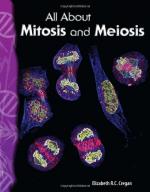|
This section contains 569 words (approx. 2 pages at 300 words per page) |

|
Tetrads, the four haploid cell products of a single meiotic division, can be used to study the behavior of chromosomes and genes during meiosis. This kind of analysis is only possible in haploid organisms, such as some fungi or single-celled algae, in which the products of each meiosis are held together in a kind of bag (or ascus). Thus, the four products of a single meiosis are recoverable and testable. Tetrads can take different forms in different organisms. In some species, four sexual spores containing the four nuclei are formed as products of meiosis e.g. in baker's yeast, Saccharomyces cerevisiae. In other species, e.g. the red bread mould, Neurospora crassa, eight sexual spores are formed: in these cases each of the four meiotic product nuclei undergoes a further mitotic division, producing eight nuclei that are then enclosed in eight spores. These groups of eight...
|
This section contains 569 words (approx. 2 pages at 300 words per page) |

|


